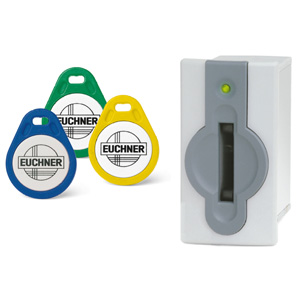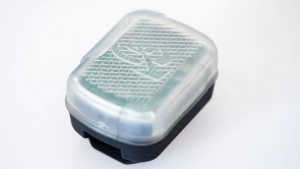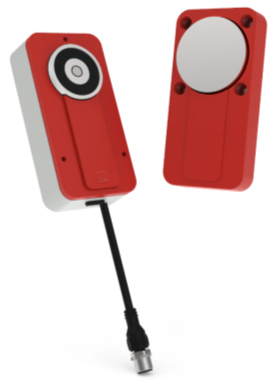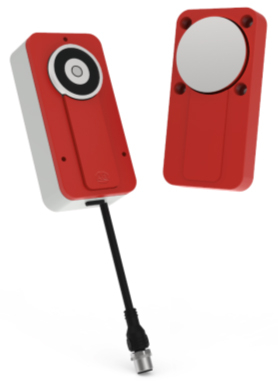Security plus safety in Euchner EKS FSA access system
17th September 2007
Source:
Euchner (UK) Ltd

The innovative EKS (Electronic Key System) supplied by Euchner, has been further developed to incorporate FSA (For Safety Applications). This ensures that all aspects of both safety and security can be accommodated, where access is required to machine functions or even complex production processing installations.
A study undertaken in Europe established that many workplace accidents were the result of unauthorised tampering with machinery. On investigation it was concluded that some types of work on equipment have, in the past, not been possible to undertake in any other way, so compromising security at the expense of safety.
The Euchner EKS FSA system in effect can, however, regularise the previously unauthorised access by providing completely new standards and possibilities for access management combined with state-of-the-art safety technology.
All important data required for access authorisation to any workstation area is stored on a chip embedded within the personalised EKS key fob. Every key is unique, and can be set-up and matched for single person use. The freely writeable memory of the key allows for additional data to be stored. It is also possible to allow access to different machines and installations with a single key by loading several access rights to it. All these are established features of the EKS system.
A new feature offered by the EKS FSA is that this personalised access authorisation can now also be used to enable safety-relevant functions on a machine. This could include, for example, the authorisation to activate a dangerous operating mode in which it is necessary to work with bypassed safety guards.
To do this, the user simply inserts his key in the EKS FSA reader unit. If information on the key is recognised as compatible, signals are generated to processors within the reader unit. This initiates a hardware output which is integrated in the safety system of the installation. In addition, the control system checks whether the key user is entitled to select a certain operating mode. These two signals can then be used, in conjunction with an enabling switch for example, to permit work with open safety guards and enabling switch. The fact that such a function is possible can prevent tampering with the installation, which might otherwise have been necessary. The machinery directive has long demanded the prevention of foreseeable misuse (Directive 98/79/EC, Annex I, 1.4.1: “It must not be possible to easily bypass the safety guards or render them ineffective”).
The personal code on individual keys allows each user to be clearly defined for specific operating modes. This is in contrast to conventional keys, where it is not possible to reliably verify the assignment of machine functions to a specific person.
The Euchner EKS FSA system in effect can, however, regularise the previously unauthorised access by providing completely new standards and possibilities for access management combined with state-of-the-art safety technology.
All important data required for access authorisation to any workstation area is stored on a chip embedded within the personalised EKS key fob. Every key is unique, and can be set-up and matched for single person use. The freely writeable memory of the key allows for additional data to be stored. It is also possible to allow access to different machines and installations with a single key by loading several access rights to it. All these are established features of the EKS system.
A new feature offered by the EKS FSA is that this personalised access authorisation can now also be used to enable safety-relevant functions on a machine. This could include, for example, the authorisation to activate a dangerous operating mode in which it is necessary to work with bypassed safety guards.
To do this, the user simply inserts his key in the EKS FSA reader unit. If information on the key is recognised as compatible, signals are generated to processors within the reader unit. This initiates a hardware output which is integrated in the safety system of the installation. In addition, the control system checks whether the key user is entitled to select a certain operating mode. These two signals can then be used, in conjunction with an enabling switch for example, to permit work with open safety guards and enabling switch. The fact that such a function is possible can prevent tampering with the installation, which might otherwise have been necessary. The machinery directive has long demanded the prevention of foreseeable misuse (Directive 98/79/EC, Annex I, 1.4.1: “It must not be possible to easily bypass the safety guards or render them ineffective”).
The personal code on individual keys allows each user to be clearly defined for specific operating modes. This is in contrast to conventional keys, where it is not possible to reliably verify the assignment of machine functions to a specific person.
Similar articles
More from Euchner (UK) Ltd
- The importance of machinery safety in current times 14th October 2020
- New multifunction safety device from Euchner 2nd June 2009
- Safety switches prevent trapping for machinery directive compliance 2nd March 2009
- Safety switches for where size is important 4th February 2009












Write a comment
No comments